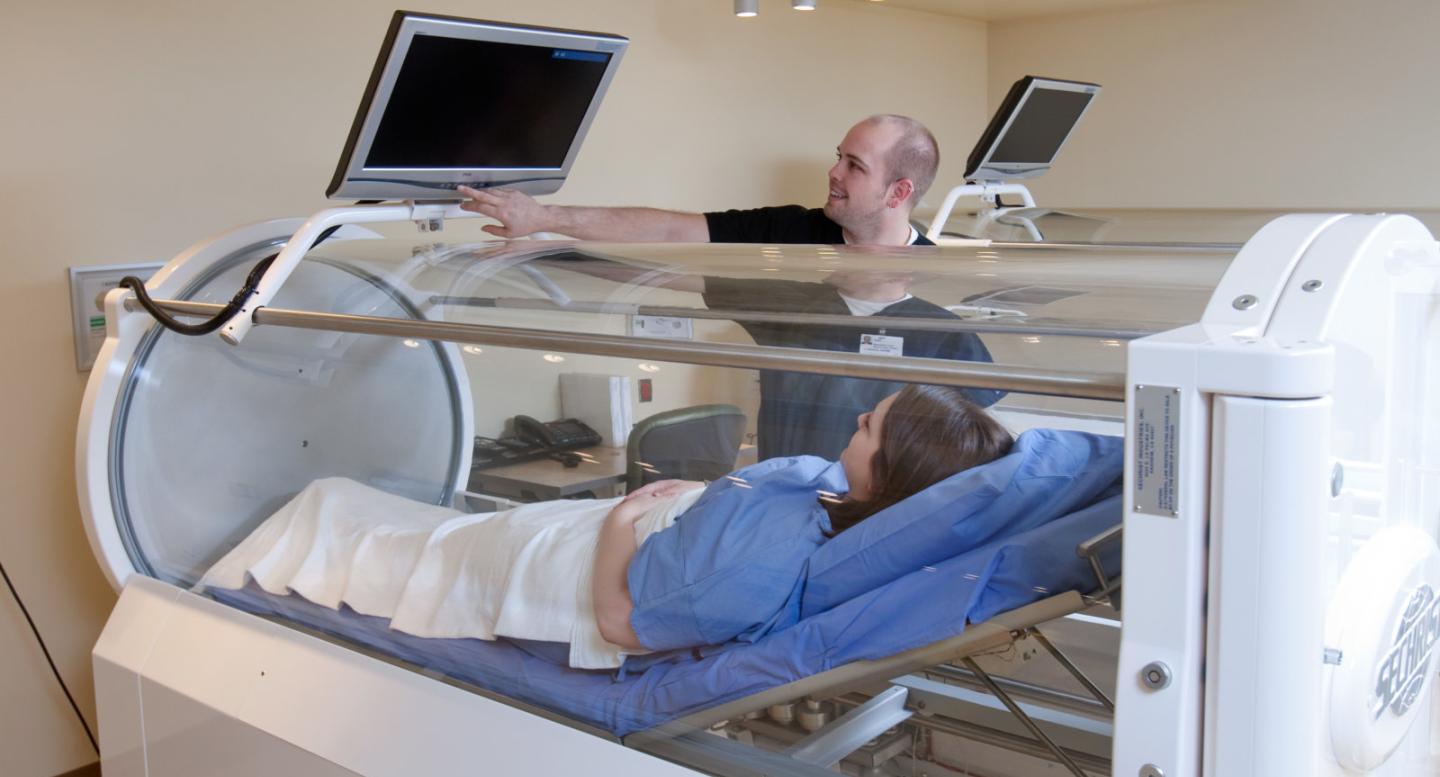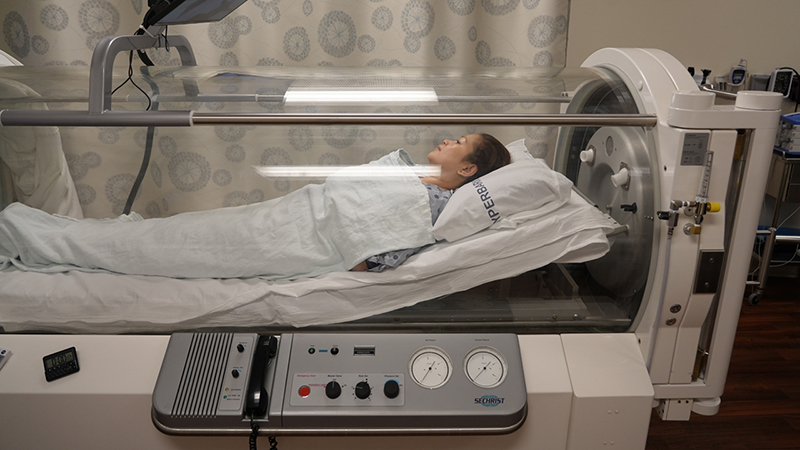Unlock the Power of Hyperbaric Oxygen Therapy for Faster Recovery
Hyperbaric Oxygen Therapy (HBOT) has arised as a crucial strategy in the realm of recuperation, offering a distinct mechanism to enhance recovery via elevated oxygen levels. As various clinical problems benefit from HBOT, understanding its specific applications and the science behind its effectiveness is vital.
What Is Hyperbaric Oxygen Treatment?
Hyperbaric Oxygen Therapy (HBOT) is a medical treatment that entails using a pressurized chamber to provide pure oxygen to patients. This therapy operates the principle that increasing ambient stress enables the lungs to take in more oxygen than under normal weather. hyperbaric oxygen therapy. Because of this, the increased oxygen levels in the blood stream can significantly boost the body's natural healing procedures
HBOT is carried out in specialized chambers, which can fit one or more clients and are commonly set to stress varying from 1.5 to 3 times that of regular air. Throughout a session, individuals take a breath 100% oxygen while the stress is raised, leading to the dissolution of oxygen in bodily liquids, consisting of plasma, lymph, and cerebrospinal liquid. This procedure not only improves oxygen delivery to damaged cells however likewise assists in different biochemical responses important for healing.
While HBOT is commonly recognized for treating conditions such as decompression health issues and carbon monoxide gas poisoning, it has also gotten focus for its prospective applications in various other medical fields. The therapy is usually well-tolerated, although it is essential for patients to be evaluated for any kind of contraindications prior to therapy.
Just How HBOT Improves Healing
The boosted oxygen levels attained during Hyperbaric Oxygen Therapy (HBOT) play a substantial duty in improving the body's recovery processes. By supplying pure oxygen at elevated pressures, HBOT promotes the diffusion of oxygen right into tissues, advertising cellular metabolism and energy production. This increased oxygen schedule sustains the synthesis of adenosine triphosphate (ATP), the energy money of cells, which is vital for repair work and regeneration.
Moreover, HBOT promotes angiogenesis, the formation of new blood vessels, which is important for providing nutrients and oxygen to injured tissues. This process not just accelerates healing yet likewise decreases the danger of persistent wounds and infections. Boosted oxygenation also aids in the removal of toxic substances and inflammatory moderators, adding to a more effective recovery setting.

Benefits of Hyperbaric Oxygen Treatment
Patients undertaking Hyperbaric Oxygen Therapy (HBOT) typically experience a series of benefits that prolong beyond improved healing times. One of the primary benefits of HBOT is its capability to enhance oxygen shipment to cells. By raising oxygen concentration in the blood, HBOT advertises cellular metabolism and motivates the fixing of damaged cells.
In Addition, HBOT has been shown to minimize swelling, which can reduce discomfort and improve total recovery. This anti-inflammatory impact can be especially useful for patients recouping from surgery, injuries, or persistent conditions. In addition, the therapy promotes the development of new members vessels, a process recognized as angiogenesis, which is important for supplying nutrients to recovery cells.
One more substantial benefit is the potential for enhanced immune feature. By enhancing the body's oxygen levels, HBOT can reinforce immune reactions, helping individuals repel infections during recuperation. Many clients report enhanced power levels and reduced fatigue following treatment, contributing to a general sense of wellness.
Problems Treated With HBOT
Numerous medical problems can gain from Hyperbaric Oxygen Treatment (HBOT), making it a flexible treatment choice in various medical care settings. HBOT is primarily identified for its performance in treating decompression health issues, a problem this website typically experienced by scuba divers. click here to find out more In addition, it plays a vital role in promoting the healing of chronic injuries, particularly diabetic foot ulcers, by enhancing oxygen shipment to compromised cells.
Various other problems that may be treated with HBOT consist of radiation injuries, where it helps in cells healing after radiation treatment. It is also advantageous for carbon monoxide gas poisoning, as it helps displace carbon monoxide from hemoglobin, restoring typical oxygen levels in the blood. HBOT is made use of in cases of thermal burns, enhancing the recovery process and reducing the threat of infection.
Patients enduring from osteomyelitis, an infection of the bone, might additionally experience boosted outcomes through HBOT, as it helps to enhance oxygen supply to contaminated cells. Specific neurological problems, such as stressful brain injury and stroke, are being discovered for HBOT's prospective neuroprotective impacts - hyperbaric oxygen therapy. On the whole, the diverse applications of HBOT emphasize its significance in modern medicine
What to Expect During Therapy
Adhering to the exploration of different problems treated with Hyperbaric Oxygen Treatment (HBOT), understanding what to expect during therapy is important for people considering this treatment. The treatment typically occurs in a specialized chamber, which can accommodate one or multiple clients. During the session, the chamber is slowly pressurized, permitting the patient to inhale pure oxygen at degrees more than air pressure.
Patients can anticipate to go through several sessions, each lasting approximately 60 to 90 minutes. Initially, there may be a sensation of volume in the ears, comparable to what one experiences during altitude changes, but this usually resolves promptly with basic equalization methods.
The healing atmosphere is kept track of by skilled experts that make certain safety and convenience. Clients are urged to kick back, as they may check out or pay attention to music throughout the procedure. While the majority of people tolerate HBOT well, some might experience moderate adverse effects such as exhaustion or short-term aesthetic adjustments.
Eventually, comprehending these facets can assist alleviate any stress and anxieties and prepare patients for a helpful recuperation experience through HBOT.
Final Thought
